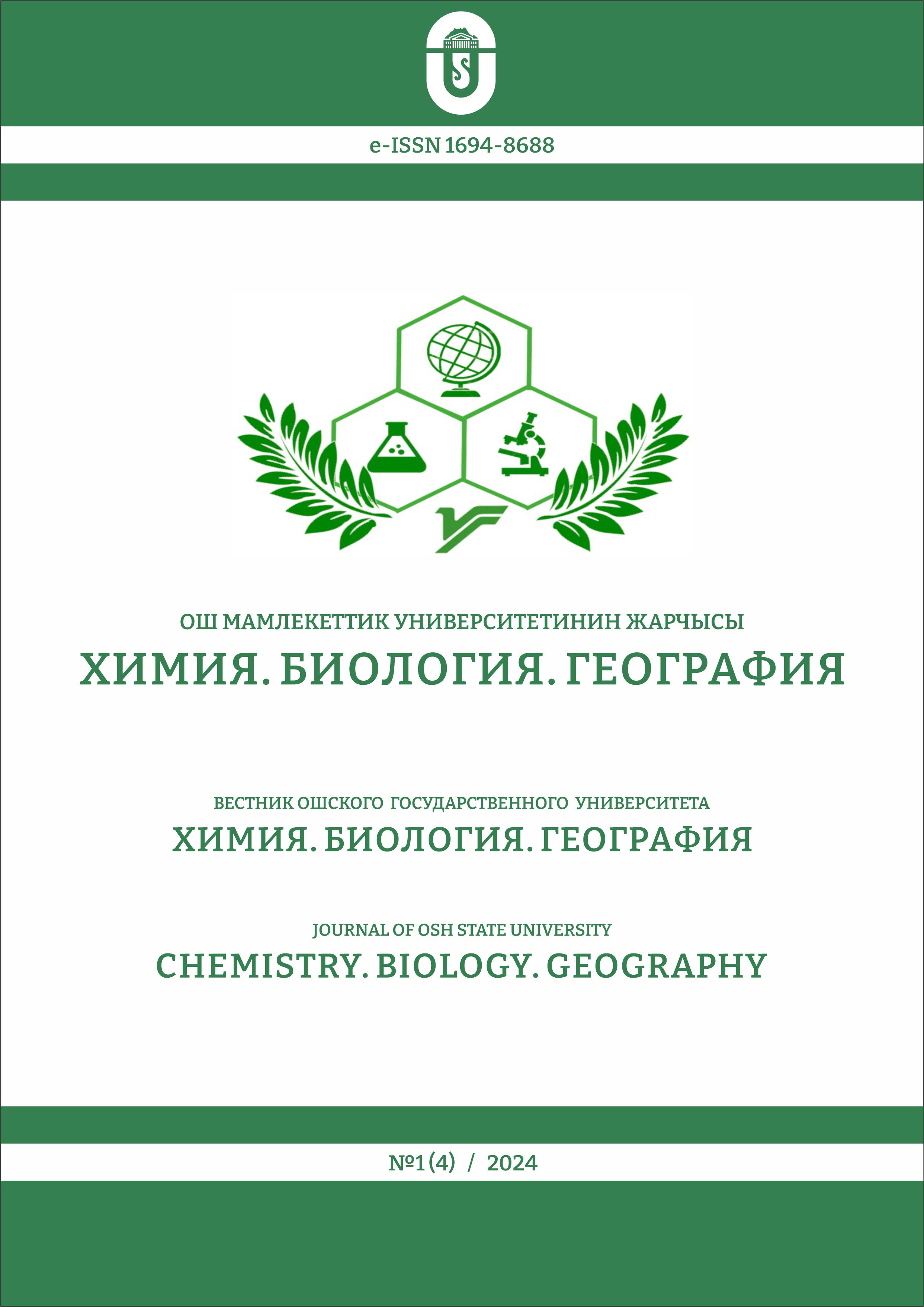ВЛИЯНИЕ ИЗМЕНЕНИЯ КЛИМАТА НА БИОРАЗНООБРАЗИЕ БИОЛЮМИНЕСЦЕНТНЫХ БАКТЕРИЙ
DOI:
https://doi.org/10.52754/16948688_2024_1(4)_22Ключевые слова:
Биолюминесцентные бактерии, Измирский залив, Изменение климата, БиоразнообразиеАннотация
Биолюминесцентные виды бактерий, производящие биолюминесценцию, которая является визуальным пиршеством в природе, сгруппированы в роды Vibrio, Photobacterium, Aliivibrio и Shewanella, преимущественно доминирующие в морских регионах. Поскольку новые виды биолюминесценции выделяются и идентифицируются каждый день, механизм и эволюция биолюминесценции, которая до сих пор не до конца понята, начинает лучше пониматься. Потому что считается, что явление биолюминесценции могло эволюционировать как минимум 40 раз с момента его возникновения, и поэтому изоляция биолюминесцентных видов из разных стран и источников позволит нам понять этот процесс эволюции. В этом контексте это важно, поскольку ранее никаких исследований в Измирском заливе не проводилось. Помимо определения эволюционных связей очень важно идентифицировать биолюминесцентные бактерии, имеющие множество областей применения, и сохранить их биоразнообразие. Потому что, как и все живые организмы, биоразнообразие микроорганизмов и биолюминесцентных бактерий является «страховкой природы» от стихийных бедствий. Таким образом, все биоразнообразие находится под угрозой из-за изменения климата, с которым мы сталкиваемся в результате ухудшения состояния окружающей среды. Поэтому следует внушать всем поколениям, что земля может существовать и без нас.
Библиографические ссылки
J. C. Ast, I. Cleenwerck, K. Engelbeen, H. Urbanczyk, F. L. Thompson, P. De Vos, P. V. Dunlap, Photobacterium kishitanii sp. nov., a luminous marine bacterium symbiotic with deep-sea fishes. Intenational Journal of Systematic and Evolutionary Microbiology, 57: 2073-2078, (2007).
R. K. Craig, Marine biodiversity, climate change, and governance of the oceans. Diversity, 4: 224-238. doi: 10.3390/d4020224, (2012).
P. V. Dunlap, K. Kita-Tsukamoto, Luminous Bacteria in “The Prokaryotes” (Eds. A. Balows et al.), Springer-Werlag, New York, (2002).
E. Ersoy, Isolation and identification of luminous bacteria in marine living beings and seawater of Izmir. Master thesis, 84 pp, (2005).
E. Ersoy Omeroglu, Isolation, phenotypic and molecular characterization of bioluminescent bacteria from Izmir Bay. Ege University, Doctoral thesis; (2011).
J. W. Hastings, K. H. Nealson, The symbiotic luminous bacteria, In: Starr M.P., Stolp, H., Trüper, H.G., Balows, A.and Schlegel H.G. (eds.), The Prokaryotes, A handbook on habitat, isolation and identification of bacteria, Berlin:Springer-Verlag, 1332-1345, (1981).
M. G. Haygood, Light organ symbiosis in fishes. Critical Reviews in Microbiology, 19: 191-216, (1993).
B. B. Imtiyaz, S. P. Dhone, P. K. Kaba, Threats to marine biodiversity. In: Marine biodiversity: Present status and prospects, edited by: P. Santhanam and P. Perumal. Pp. 21-26, (2011).
İ. Karaboz, A. Sukatar, Bakterilerde Biyolüminesens. Bilim ve Teknoloji Dergisi, Anadolu Üniversitesi, Eskişehir, (2003).
İ. Karaboz, ATP Yöntemi, Empedans Yöntemi, HGMF Tekniği, DEFT Tekniği, LAL Testi: Biyoteknolojide Hızlı Yöntemler ve Çalışma Prensipleri Eğitim Semineri Kitabı, EBİLTEM, Bornova-İZMİR, (2002).
K. Kita-Tsukamoto, K. Yao, A. Kamiya, S. Yoshizawa, N. Uchiyama, K. Kogure, M. Wada, Rapid identification of marine bioluminescent bacteria by amplified 16S ribosomal RNA gene restriction analysis. FEMS Microbiology Letters, 256: 298-303, (2006).
N. Lemoine, K. Böhning-Gaese, Potential impact of global climate change on species richness of long-distance migrants. Conservation Biology, 17: 577-586, (2003).
E. A. Meighen, Genetics of bacterial bioluminescence. Luminescence, 28: 117-139, (1994).
C. B. Munn, Marine microbiology: ecology & applications. CRC Press, (2019).
K. H. Nealson, J. W. Hastings, The Luminous Bacteria, The Prokaryotes, 2nd edn, In: Balows A., Trüper H.G., Dworkin M., Harder W. and Schleifer K.H. (eds.), Springer-Verlag, new York, 625-639, (1992).
E. Ersoy Ömeroğlu, İ. Karaboz, İzmir Orta Körfezi’nden İzole Edilen Biyolüminesen Vibrio İzolatının Poli-Β-Hidroksi Bütirat (PHB) Üretim Verimliliğinin Belirlenmesi. Biyoloji Bilimleri Araştırma Dergisi, 3(2): 21-26, (2010).
P. R. Pawar, S. S. Sanket, B. P. Rahul, Plastic marine debris: Sources, distribution and impacts on coastal and ocean biodiversity. PENCIL Publication of Biological Sciences, Oceanography, 3(1): 40-54, (2016).
S. M. Peat, B. J. Adams, Naturel selection on the luxA gene of bioluminescent bacteria. Symbiosis, 46: 101-108, (2008).
A.B. Ramesh, G. Loganathan, K. Venkateswaran, Ecological dynamics of marine luminous bacteria. Journal of Basic Microbiology, 30: 686-703, (1990).
G. Relini, Threats to marine biodiversity in the Mediterranean. www.oceano.org, (2012).
R. Sadikot, T. S. Blackwell, Bioluminescence imaging. Proceedings of The American Thoracic Society, 2: 537-540, (2005).
W. W. Sechrest, T. M. Brooks, Biodiversity–threats. Encyclopedia of Life Sciences, Macmillan Publishers Ltd, Nature Publishing Group/www.els.net. Pp. 1-8, (2002).
D. K. Welsh, S. A. Kay, Bioluminescence imaging in living organisms. Current Opinion in Biotechnology, 16: 73-78, (2005).
E. A. Widder, Bioluminescence in the ocean: origins of biological, chemical, and ecological diversity. Science, 328: 704-708, (2010).
S. Yoshizawa, M. Wada, K. Kita-Tsukamoto, E. Ikemoto, A. Yokota, K. Kogure, Photobacterium aquimaris sp. nov., a luminous marine bacterium isolated from seawater. Intenational Journal of Systematic and Evolutionary Microbiology, 59: 1438-1442, (2009).
Загрузки
Опубликован
Как цитировать
Выпуск
Раздел
Лицензия
Copyright (c) 2024 Вестник Ошского государственного университета. Химия. Биология. География

Это произведение доступно по лицензии Creative Commons «Attribution-NonCommercial» («Атрибуция — Некоммерческое использование») 4.0 Всемирная.

